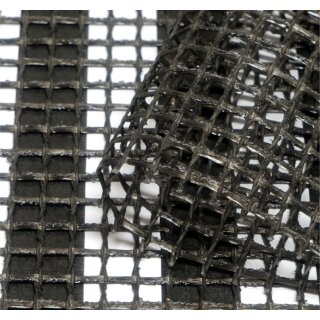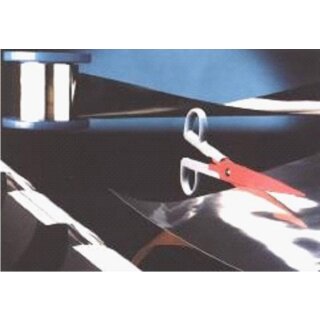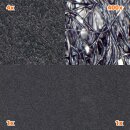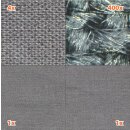
-
: 11 - 13 Workdays (DE - int. shipments may differ)

-
: 11 - 13 Workdays (DE - int. shipments may differ)

-
: 8 - 10 Workdays (DE - int. shipments may differ)

-
: 11 - 13 Workdays (DE - int. shipments may differ)
- SKU:
- mukleb91
- MU metal foil with adhesive coating
- Strip thickness: 0.1 mm
- Standard width: 91mm
- Permeability: µ4 = 4000, µmax = 80,000
- Note: minimum order: 5 linear metres
- SKU:
- NCV95
- SKU:
- s_gray
Shielding of Electric Alternating Fields
The principle of shielding electric alternating fields is based on grounding these fields. Electrically conductive materials are required for this purpose. These materials are applied to the emitting surfaces and then properly grounded with suitable materials.
Without grounding, these shields do not work!
There are conductive, breathable, and solvent-free paints that can be applied to walls, ceilings, and floors (in raw construction). Once grounded, these surfaces can be painted over or wallpapered again.
Additionally, there are conductive fleeces made from carbon-coated polyester for use under beds, carpets, or wooden paneling.
In principle, all RF shielding materials with a metallic conductive surface can also be used for shielding electric alternating fields.
Shielding of Magnetic Alternating Fields
Magnetic alternating fields can penetrate almost any material (even lead!). However, there are some metal alloys, such as Mu-metal or an amorphous cobalt alloy, which can be used in the form of sheets and foils as "shielding material" for magnetic alternating fields. This type of shielding works by short-circuiting the magnetic field lines near the source, preventing them from spreading into the surrounding space.
Preferably, smaller field sources are encapsulated in multiple layers of this material, while, for example, cables in or behind a wall need to be covered extensively with these materials. Subsequent magnetic field measurements are strongly recommended to verify the effectiveness of the shielding measures.
These magnetic field shielding materials can be quite expensive, and shielding an entire room can become correspondingly costly!
Using these materials to shield an entire house under a high-voltage line or next to an electric railway is unrealistic!



